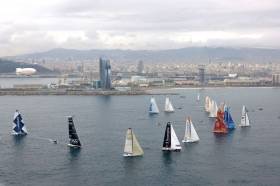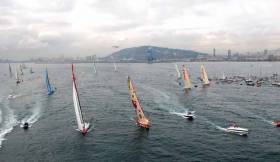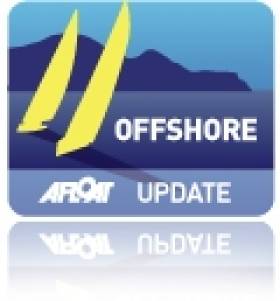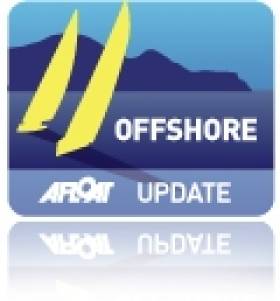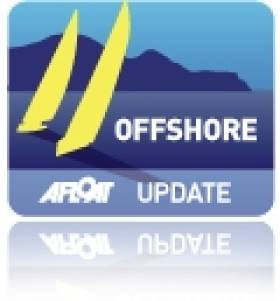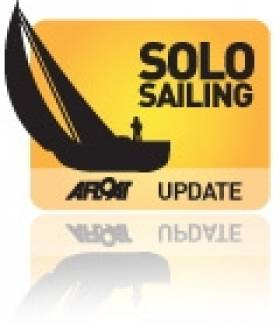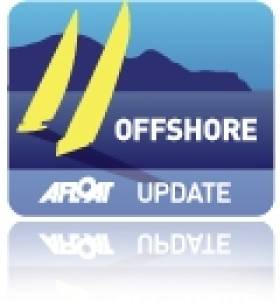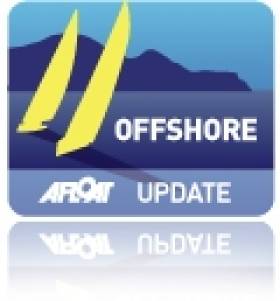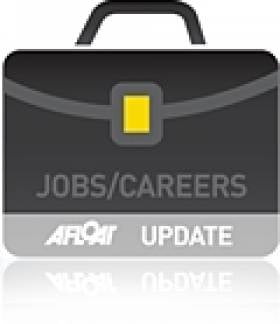Displaying items by tag: Barcelona World Race
Organisers Cancel Next Year’s Barcelona World Race
Recent political turmoil in Catalonia has been cited by race organisers in their decision to cancel next year’s Barcelona World Race.
The fourth edition of the double-handed round-the-world race for IMOCAs was due to start on 12 January 2019, and the notice of race was published earlier this year.
Eight teams had already announced their intention to race – and the IMOCA class is now looking at the possibility of creating “a major new international ocean race” to take its place on the calendar.
“It was only late last week that the IMOCA class was informed of this bad news,” said the class in a statement. “It was a massive blow, as the IMOCA class has been working hard for more than 10 years to develop this race and make it a fantastic sporting event.
“The disappointment is that much bigger because this fourth edition of the Barcelona World Race looked extremely promising. Eight crews were already interested in competing and others were seriously considering that. For the first time, a stopover was scheduled in Sydney, with the possibility for the skippers to change their crewman.
“This stopover in Australia would have been a huge benefit in terms of the internationalisation of the IMOCA class. And for the racers, it would have been a great opportunity to race double-handed in the Southern Ocean and to prepare in the best way possible for the 2020 Vendée Globe.”
The class is now turning its attentions to organising a replacement event between the 2018 Route du Rhum and the 2019 Transat Jacques Vabre for teams that have already expended efforts on the Barcelona World Race, although it acknowledges that this “is a major challenge, as the timing is tight.”
With 365 days to go until the start of the fourth edition of the Barcelona World Race (12th January 2019), Barcelona’s round the world event has issued the official document containing details of the key rules of the regatta.
This Notice of Race for the Barcelona World Race 2018/19 has been eagerly anticipated. Changes to racing dates, the competition format, which now has two legs and an option to change co-skipper in the second leg, are new features which mean the IMOCA calendar’s double-handed round the world event has a brand-new look.
- The Race Management team has unveiled the regatta’s key document, where the official rules for the fourth edition of the race are laid out.
- Two legs: Barcelona – Sydney – Barcelona and the option to change co-skipper for the second leg are the main changes in this new format for the double-handed, round the world regatta
- The winner will be decided based on points accumulated across the two legs.
- There will be a maximum of one technical stopover permitted on each leg of a minimum of 12 hours in length and a maximum of 48 hours.
The most significant changes set out in the document are as follows:
1. The deadline for registrations is the 30th September 2018.
2. The start will be given in Barcelona on the 12th January 2019, at 13:00 (GMT+1).
3. The official press conference will take place on the 10th January 2019 at 12:00 (GMT+1).
4. The start in Sydney of the second leg will be on the 9th March 2019.
5. All boats must start the second leg of the regatta no later than 48 hours after the official start of the leg is given.
6. A single technical stopover for repairs or medical assistance is permitted on each leg.
7. Final overall rankings for the Barcelona World Race 2018/19 will be calculated based on the sum of points gained across both legs.
Alex Thomson Explains Dismasting Incident That Took Hugo Boss Out Of Barcelona World Race
#BarcelonaWorldRace - "One of the most painful experiences of my sporting life" is how Alex Thomson describes the dismasting incident on the IMOCA 60 Hugo Boss that took him and Alex Pepe out of the Barcelona World Race.
As previously reported on Afloat.ie, the pair were in the lead of the global two-man-crew offshore challenge when they lost their rig on Wednesday evening (14 January) some 370 nautical miles off the Brazil coast.
Speaking from the South Atlantic yesterday (15 January) en route to Salvador, Brazil, Thomson outlined exactly what happened on board their monohull.
“At about 9pm Pepe and I were doing a sail change in 18 knots of wind. As we dropped one of our headsails, the furler broke and flew into the air.
"For a few seconds the mast hovered, before falling backwards and into the water. Pepe reacted quickly and we cut the rest away, losing the mast, boom and rigging.
"Of course we are devastated and disappointed. As offshore ocean racing sailors this is a peril of our sport, but it is still painful."
Though the pair are now out of the race, their focus is entirely on attempting to "assess and analyse the problem and learn from this, but we will remain ever determined and resilient to come back stronger and succeed.”
See more on this story at the Alex Thomson Racing website HERE.
Barcelona World Race Leader 'Hugo Boss' Dismasted Off Brazil
#barcelonaworldrace – 14 days into the race and 2 race records broken, Alex & Pepe were making brilliant progress in the Barcelona World race until HUGO BOSS lost their rig yesterday evening at 21.02 GMT, 370 nautical miles off the coast of Brazil.
Alex Thomson, a frequent visitor to Ireland, and Pepe Ribes, skippers of the IMOCA 60 HUGO BOSS, which was leading the Barcelona World Race, this evening lost their mast overboard at 21.02 GMT. The yacht was reaching in moderate conditions when there is reported to have been a rigging failure and the mast fell over.
Briton Thomson, 40, and Spaniard Ribes, 43 will now cease racing in the Barcelona World Race 2014 -2015. The skippers and the shore team are currently evaluating how to get the boat to the nearest landfall, which is likely to be Salvador de Bahia in Brazil which is a significant distance from the boat's current position.
Below posted only yesterday on facebook hours before the dismasting, a look back at the 2nd week of The Barcelona World Race onboard HUGO BOSS as Alex & Pepe hold onto their lead over the rest of the fleet:
Hugo Boss Lead in Barcelona World Race
#bwr_2014 – In the Barcelona World Race British entry Hugo Boss have consolidated over the course of last night, gybing back from their position in the east of the pack, to line up in the front of their rivals with a lead cut to just over 11 miles this morning. As well as their desire not to pin themselves out to the west, the trade winds were a little quieter for them so close to the African coast, and so the move back to the west made sense.
Cheminées Pooujoulat have been quick through the night and are back up to third at about eight miles up on GAES Centros Auditivos. Hugo Boss gybed just in front of Neutrogena which is now second.
The east-west separation between Hugo Boss' course and that of GAES Centros Auditivos is 30 miles and Anna Corbella and Gérard Marin are slightly faster than Alex Thomson and Pepe Ribes, at just on 17.8kts.
The fast pace should continue for the coming days, probably until Friday. The next strategic decision will be at the Cape Verde islands tomorrow when they must decide how to pass this island group. To he west there is slightly more wind on the forecast, but the same situation as the Canary Island holds true again, but there will be up to 30kts of NE'ly trades to ensure sailing will be fast and furious.
The motorway south is well and truly working for the fleet. The leaders are a likely to gybe west again this evening as the breeze appears lighter close to the Mauritania coast. But up ahead the Doldrums do not look too active at all and a reasonably easy passage through to the Equator does seem likely, the overall race pace very similar to the 2010-2011 edition.
Once again conditions through the night will have been excellent with the full moon and little or no cloud cover, temperatures are very pleasant.
One Planet One Ocean remain in good wind pressure on their course, but they too will have to adjust to the west and when they settle on their course south then the speed differential between their older boat and the newer generations will start to really show and they might expect to lose 40-50 miles a day. Correspondingly We Are Water can start to see steady gains on their nearest rivals once they are on the fast route south.
Spirit of Hungary had some good, faster sailing through the night but it will only really start to get into the stronger trade winds today, a chance to enjoy the speed potential of their newest IMOCA 60.
#barcelonaworldrace – Tuesday allowed the sixteen skippers who will start the 22,500 miles two handed Barcelona World Race to fully enjoy their final hours on dry land before taking this afternoon's 1300hrs (CET midday UTC) start. At least one of the competing skippers has a connection to Ireland thanks to a pit–stop taken on the south coast last April.
The fleet includes British sailor Alex Thomson who visited Cork twice in 2014. He sailed here first in April in his Open 60 Hugo Boss and stopped off at Cork Harbour Marina for some running repairs prior to a Transatlantic passage. Such was his positive experience in the harbour he returned in October to talk about his sailing plans at a public lecture at Cork's Millennium Hall as part of Cork Innovation Week. At that lecture he said he believed Cork harbour had the 'potential to be a global yacht racing hub'.
Thomson and his co-Skipper Pepe Ribes will sail HUGO BOSS an IMOCA 60 racing yacht 26,000 Nautical Miles, non-stop, unassisted around the globe.
The Barcelona World Race is the only double-handed (two crew per boat), non-stop, round the world regatta. The race takes the sailors on a course that started and will finish in Barcelona. The course will take HUGO BOSS via the Cape of Good Hope, Cape Leeuwin and Cape Horn. The race is a highlight in the IMOCA circuit and part of the prestigious Ocean Masters World Championships.
The last time Thomson competed in The Barcelona World Race was back in 2007-2008, when he and his co-skipper at the time, Andrew Cape, finished the race in second place.
This time around, Thomson is competing alongside co-skipper, Pepe Ribes; one of Spain's most experienced and well respected sailors. Thomson and Ribes have over 35 years offshore racing experience between them, and are competing onboard a new generation IMOCA 60.
Thomson made headlines in 2013 when he successfully completed the gruelling Vendee Globe - a solo, unassisted round-the-world race - breaking a British record along the way. Comparing the challenges of the Vendee Globe and the BWR, Thomson said;
"The Barcelona World Race is mentally easier than the Vendee Globe because you have another person there with you. But the Barcelona World Race is a more difficult race physically than the Vendee. It's a double handed race, so while there are two of you onboard, you are racing the boat to its full potential so it requires more physically."
Speaking about his co-skipper, Thomson said; "I met Pepe about four years ago when he was another skipper in the race. He has been working with us for about a year and we have got to know each other well. We've done thousands of miles together. We are quite different characters, we look at things in very different ways. But that's a positive thing. Because we are less likely to let a detail slip."
The Barcelona World Race will take up to 90 days to complete
The start will be given by Barcelona's Mayor Xavier Trias with the line set in front of the iconic 90m tall Hotel Vela (W-Hotel). The mayor will signal the start with a traditional sound as well as the emblematic lowering of the 'flags' on a new sculpture on the Placa del Mar on the Barcelona sea-front.
The onshore activity will begin at 10 am when the IMOCA 60s bid their farewells and dock-out from the pontoons at the base of the Columbus statue. From 12.30 pm on the beachfront a starting ceremony will begin with a live performance by the Fura del Baus musicians at the Dona del Milleni sculpture. Xavier Trias, will drive the mechanism that moves the arms, waving a flag signal, which will start the circumnavigation of the globe.
After the gun there are two options for a circuit along the beach before heading south towards the exit from the Med. The most likely is a two miles reach to a turning mark where the fleet will pass before heading for the Strait of Gibraltar, 535 miles down the track. Winds are forecast to be light around start time.
The meteo situation suggests there will be a variety of options after that final turning mark, and hence the fleet could possibly spread. Initially there might be the choice to go east to hook into the existing stronger breeze or wait until it is filled across to the Spanish coast. Essentially Barcelona lies in no-go zone, between the winds. The brisk NE'ly will carry the leaders down to the Balearics by between 2200hrs and midnight (about 90 miles) where the routing suggests passing just to the east of Ibiza. The winds through this first night will peak at just over 20kts but after the Balearics through the early hours the winds will ease, receding from the shore.
Barcelona World Race 2014-15 entries:
Cheminees Poujoulat, Bernard Stamm (SUI) and Jean Le Cam (FRA)
GAES Centros Auditivos, Anna Corbella (ESP) and Gerard Marin (ESP)
Hugo Boss, Alex Thomson (GBR) and Pepe Ribes (ESP)
Neutrogena, Guillermo Altadill (ESP) and Jose Munoz (CHI)
One Planet One Ocean Pharmaton, Aleix Gelabert (ESP) and Didac Costa (ESP)
Renault Captur, Jorge Riechers (GER) and Seb Audigane (FRA)
Spirit of Hungary, Nandor Fa (HUN) and Conrad Colman (NZL)
We Are Water, Bruno Garcia (ESP) and Willy Garcia (ESP)
Dick Goes in Search of Double Win
Three years after his victory in the first Barcelona World Race with Damian Foxall (in 92 days, 09 hours, 49 minutes and 49 seconds at an average speed of 11.13 knots), Jean-Pierre Dick is doing the double-handed three cape route again. For his second time competing in this race leaving the Catalan city, he will be setting off in the good company of a very well-known figure in offshore racing: Loïck Peyron. The two are already a right pair, all set to dance a very fine two step across the world's oceans. Unquestionably, these talented gentlemen skippers make up a very stylish and dynamic duo, as can be seen from their victory in the Transat Jacques Vabre in 2005, or from their collaboration in the design and the construction to the two sisterships for the previous Vendée Globe. Among the combinations promising success, these partners, together in the Virbac-Paprec 3 cockpit, designed to cut through the waves, will definitely count among the tandems with expertise in sailing in extreme conditions. In all, there will be plenty to spice up the race between top sailors in this circumnavigation, which promises to be highly intense, with a victory in view.
Champion Jean Pierre Compares Foxall and Peyron
Jean Pierre Dick has been talking about preparations for the defence of his title later this month in an interview on the Barcelona race website. He won the global double-handed race in 2008 with Kerry's Damian Foxall. In the latest interview Dick gives a few interesting insights on Ireland's top offshore sailor and how sailing with him compares with Dick's current partner, the famous French offshore sailor Loick Peyron.
Excerpts below and full article HERE
What are the main differences between Damian and Loïck as sailors and who will how you work together compare with last time?
" Last time Damian was more looking after the boat, if there were things to repair he was the man and maybe more at the front of the boat, I was more into picking the weather. Now with Loïck it will be more equivalent, I will be more equal on the repairs this time which is good for my training for the Vendée Globe. And for sure Loïck is very knowledgeable on his weather analysis, so we will work together. If there is a security decision I am the skipper and the owner of the boat, and the project, and they are my sponsors, so that becomes my task, but I want Loïck to be involved in the strategy and the thinking in this race. In this race what makes you successful is the interaction between the two skippers. It is important that we know work well together, we have done some training together and we have done some weather analysis together, so there will be the same level of information."
What are the main differences between the two?
" Loïck has such huge experience, Damian also has huge experience but it is coming more from the Volvo also, Loïck's (experience) is more....well, everything sailing! So I would say the main difference is Damian is a very physical guy, very strong. Loïck is more using his brain to sail smart, to make less effort. So that is how I see things, but there is a change for sure but I will learn more about both experiences as we go. Loïck has more experience with single and double handed races, maybe I would say more experience over his while life. Damian has been more on more physical races like the Volvo. Both are very able to repair the boat, to sail the boat on their own, they would have been able single handed even though Damian did not do more, he would be very talented to do so."
Knox-Johnston in Search for Ten Skippers
Sailing legend Sir Robin Knox-Johnston has launched his latest search for ten exceptional skippers to lead the internationally sponsored teams in the next edition of the Clipper Round the World Yacht Race. Clipper 11-12 will start form the UK in August next year and on board the matched fleet of stripped down 68-foot ocean racing yachts will be teams of novice crews representing all walks of life. The only professional sailor on board, the skipper has the challenge of turning such a diverse mix of people into a finely-honed racing team and it's one that professionals understand can deliver valuable benefits to their CV.
Sir Robin says, "Tackling this unique challenge, with its roaring gales and towering seas, as well as the frustrations of tricky calm spells, is no mean feat. The skippers we are looking for need to be up to the challenge of competitively racing our 68-foot yachts around the world with a non-professional crew onboard.
"The successful individuals must have the ability to draw the line between competitiveness and safety, whilst also motivating a sometimes exhausted crew into an enthusiastic and committed team.
"Leading a team of novice sailors in a race around the world is one of the hardest and most challenging jobs that any skipper could ever undertake and not everybody is up to this challenge."
Successful candidates will skipper one of the Dubois designed Clipper 68s and must also have an understanding of the commercial and media demands of this high-profile global event which can help launch a skipper's career.
The youngest skipper to win the Clipper Race was Alex Thomson who was just 25 when he led a team in the 1998 edition of the race. Twelve years later and Alex is getting his brand new IMOCA Open 60, Hugo Boss, ready for the double-handed Barcelona World Race which starts in December. The Gosport based sailor is widely considered to be one of the UK's top solo ocean racers and once he has returned for the Barcelona World Race he will be hoping to fulfil his dream by becoming the first non-Frenchman to win the Vendee Globe.
Other Clipper skippers who have gone on to secure sponsorship for solo ocean racing include Hannah Jenner who skippered in both the Clipper 07-08 and 09-10 Races. Hannah will be taking part in the Global Ocean Race next year, a 30,000-mile double-handed race around the world. Similarly Clipper 09-10 skipper, Chris Stanmore-Major is about to set off on his 2,500-mile qualifying passage for the VELUX 5 OCEANS race onboard his Open 60 Spartan having secured sponsorship to take part in what is deemed to be 'The Ultimate Solo Challenge'.
Interested skippers need to have the correct level of qualifications, including an MCA approved Ocean Yachtmaster. They need to be excellent sailors who put seamanship and safety first, have a proven track record in sail training and can demonstrate that they are strong team leaders.
Clipper Race Director Joff Bailey, skipper of New York in the Clipper 05-06 Race, says, "Being a race skipper in the Clipper Round the World Yacht Race was one of the hardest jobs I have ever done. However, the reward and satisfaction when you see the crew that you have trained react to situations as though they were full-time professionals and the look of achievement on their faces when they have crossed an ocean and finished a race, is the best high in the world."
If you think you are up for the challenge and have the right characteristics and experience contact Sir Robin by email on [email protected] to request an application form.




























